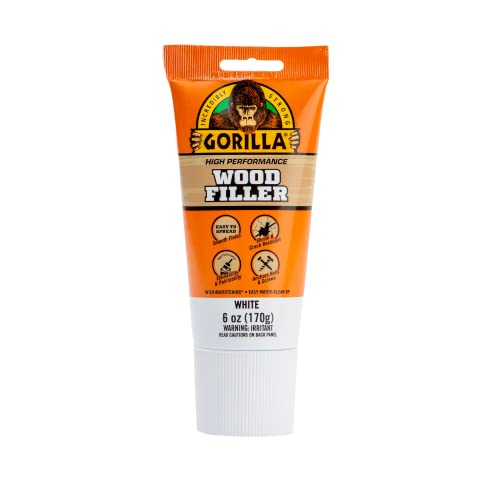Does Water Based Poly Yellow: Understanding the Discoloration
Water-based polyurethane can yellow over time due to exposure to light and air. This chemical reaction can cause the polyurethane to change color over time, resulting in a yellowing effect.
Water-based polyurethane is a popular choice for finishing wood surfaces due to its low odor and easy cleanup. However, it is important to be aware of the potential for yellowing over time. Understanding the factors that contribute to yellowing can help in minimizing its effects and preserving the natural appearance of the wood.
We will explore the reasons behind water-based polyurethane yellowing, ways to prevent it, and tips for maintaining the original finish of wood surfaces. By following these guidelines, you can ensure that your wood finishes remain clear and vibrant for years to come.
The Science Behind Water Based Poly Discoloration
When it comes to water-based polyurethane, one of the common concerns among DIY enthusiasts and professionals alike is its potential to yellow over time. Understanding the science behind water-based poly discoloration can help shed light on why this happens and how it can be prevented. In this article, we’ll delve into the chemical composition and reaction with light, as well as the impact of environmental factors on water-based poly discoloration.
Chemical Composition And Reaction With Light
The chemical composition of water-based polyurethane plays a significant role in its susceptibility to yellowing. Polyurethane contains certain compounds that are sensitive to light, especially ultraviolet (UV) radiation. When exposed to UV light, these compounds can undergo a chemical reaction known as photooxidation, leading to a yellowing or darkening effect on the surface of the polyurethane.
Impact Of Environmental Factors
In addition to light exposure, environmental factors such as humidity, temperature, and air quality can also contribute to the discoloration of water-based poly. High levels of humidity, for instance, can accelerate the yellowing process, while extreme temperatures may cause the polyurethane to degrade more quickly. Furthermore, exposure to certain chemicals or pollutants in the air can interact with the polyurethane, hastening its discoloration.
Factors Contributing To Water Based Poly Discoloration
When it comes to applying water-based polyurethane on wood surfaces, one common concern among DIY enthusiasts and professionals alike is the potential for discoloration. Understanding the factors contributing to water-based polyurethane discoloration is crucial for achieving a durable, visually appealing finish. Whether you are working on a furniture piece or a flooring project, it’s essential to be aware of the various elements that may lead to yellowing or changes in appearance over time.
Exposure To Uv Light
One of the primary factors contributing to the yellowing of water-based polyurethane is exposure to UV light. Sunlight and artificial lighting with ultraviolet radiation can penetrate the finish, causing it to degrade and develop a yellowish tint over time. To mitigate this effect, consider using water-based polyurethane products specifically designed to resist UV light. Additionally, minimizing direct sunlight exposure and using protective coatings or coverings can help prolong the finish’s original appearance.
Quality Of Polyurethane
The quality of the water-based polyurethane plays a significant role in its tendency to yellow. Opting for high-quality, UV-resistant polyurethane formulations can reduce the likelihood of discoloration over time. Cheaper or lower-grade products may contain impurities or additives that are more prone to yellowing, especially when exposed to environmental stressors. Prioritizing quality when selecting water-based polyurethane can contribute to a more durable and aesthetically enduring finish.
Application And Drying Process
The application and drying process of water-based polyurethane can also impact its susceptibility to discoloration. Inadequate preparation, uneven application, or improper drying conditions can lead to uneven curing and potential yellowing. It’s crucial to follow the manufacturer’s guidelines for application, including proper preparation of the wood surface, even application techniques, and adequate drying time. Controlling environmental factors such as temperature and humidity during the drying process can also contribute to achieving a clear, non-yellowing finish.
Preventing Water Based Poly Discoloration
Water-based polyurethane, often used for finishing wood surfaces, is known for its clear finish and low odor. However, one common concern among homeowners and DIY enthusiasts is the potential for the polyurethane to yellow over time. This can be attributed to a variety of factors, including improper application, choice of polyurethane, and exposure to light and heat. Fortunately, there are measures you can take to prevent water-based poly discoloration and maintain the natural beauty of your wood surfaces.
Choosing The Right Polyurethane
When selecting water-based polyurethane, opt for formulations that are labeled as “non-yellowing” or “crystal clear.” These products are specifically designed to resist yellowing over time, providing a durable and clear finish that maintains the natural appearance of the wood. Check the product specifications and consult with professionals at hardware stores to ensure you choose a polyurethane that minimizes the risk of discoloration.
Proper Application Techniques
Applying water-based polyurethane requires careful attention to detail to prevent discoloration. Ensure the wood surface is clean, dry, and free from dust before applying the polyurethane. Use a high-quality synthetic brush or applicator to apply thin, even coats, following the wood grain to achieve a smooth finish. Avoid over-applying the polyurethane, as thick layers can lead to yellowing. Additionally, allow sufficient drying time between coats as indicated on the product label to promote proper curing and reduce the risk of discoloration.
Protective Measures For Finished Surfaces
Once the water-based polyurethane is applied and cured, take proactive measures to protect the finished surfaces from potential discoloration. Avoid exposing the wood to prolonged direct sunlight, as UV rays can accelerate yellowing. Consider using UV-protective coatings or applying a layer of clear furniture wax to shield the polyurethane finish from UV damage. Furthermore, maintain a consistent indoor environment with moderate temperature and humidity levels to help preserve the integrity and clarity of the polyurethane finish over time.

Remedies For Water Based Poly Discoloration
Water-based polyurethane is a popular choice for protecting wood surfaces due to its low odor and easy cleanup. However, one common issue that can occur with water-based poly is yellowing or discoloration over time. This can be caused by a number of factors, including exposure to UV light, environmental conditions, or improper application.
Sanding And Refinishing Options
To remedy yellowing or discoloration caused by water-based poly, sanding and refinishing the affected areas may be necessary. This process involves carefully sanding away the discolored polyurethane and then applying a fresh coat to restore the wood’s original appearance.
Use Of Uv-resistant Finishes
Another remedy for water-based poly discoloration is to use UV-resistant finishes. These specialized coatings are designed to protect against the harmful effects of UV light, helping to prevent yellowing and discoloration over time. By using a UV-resistant finish as a topcoat over the water-based poly, you can mitigate the risk of future discoloration.
Professional Restoration Techniques
If the yellowing or discoloration is severe or widespread, professional restoration techniques may be required. Professional woodworkers or restoration experts have the skills and tools to effectively remove the discolored polyurethane, repair any underlying damage, and apply a fresh, even coat of water-based poly to bring the wood surface back to life.
Long-term Maintenance Of Water Based Poly Surfaces
Over time, water based poly surfaces may exhibit yellowing. To prevent this, use a water based poly with UV inhibitors and avoid exposure to direct sunlight. Regular cleaning and maintenance can also help prolong the surface’s original appearance.
Regular Cleaning And Upkeep
Regular cleaning and upkeep of water-based poly surfaces are essential to maintaining their appearance and prolonging their lifespan. To keep surfaces looking their best, regularly dust and clean with a damp microfiber cloth or mop. Avoid using abrasive cleaners or chemical solvents as they can damage the finish.
Monitoring For Signs Of Discoloration
It’s important to monitor for signs of discoloration or yellowing on water-based poly surfaces. Keep an eye out for any changes in color or gloss levels, as these could indicate the need for maintenance or reapplication of the poly finish. Inspecting the surfaces under different lighting conditions can help in detecting any discoloration.
Best Practices For Preserving The Finish
To preserve the finish of water-based poly surfaces, it is recommended to use protective pads or coasters under heavy items to prevent scratches or dents. Avoid prolonged exposure to direct sunlight, which can cause discoloration over time. In high-traffic areas, consider using area rugs to minimize wear and tear on the poly-coated surfaces.
Frequently Asked Questions On Does Water Based Poly Yellow
Does Water Based Poly Yellow Over Time?
Yes, water-based polyurethane can yellow over time due to exposure to light, heat, and chemical reactions. However, choosing a high-quality, UV-resistant product and proper application techniques can minimize yellowing and maintain the natural color of the wood for a longer period.
How To Prevent Yellowing Of Water Based Poly?
To prevent yellowing of water-based polyurethane, it’s essential to apply a clear version with UV protection. Additionally, minimizing exposure to light and heat, using protective coatings and following proper application techniques can help extend the lifespan of the wood’s natural color and prevent yellowing over time.
Can Yellowing Be Reversed In Water Based Poly?
Unfortunately, once yellowing occurs in water-based polyurethane, it’s difficult to reverse the process. However, sanding down the affected layer, applying a clear, UV-resistant coat, and taking preventive measures can help restore and maintain the wood’s original color, reducing further yellowing in the future.
Conclusion
It is important to consider the impact of water-based poly yellowing on your wooden surfaces. By choosing high-quality products and following proper application techniques, you can minimize the risk of yellowing. Regular maintenance and care are also crucial to preserving the beauty and integrity of your wood.
Choose wisely for long-lasting results.







